Just in time for the holiday shipping season, it’s time to start focusing on some cargo aircraft! I’m at the point now where my airliner template collection it’s getting a bit too heavy on the commercial aviation side of things, and with the air cargo industry being as large and strong as it is, it’s probably a pretty good idea that I spend a bit of time going back and creating cargo variants of some of the passenger aircraft that I’ve already done.
Thankfully, cargo variants of commercial passenger aircraft are relatively easy for me to create since I’ve got most of the hard work done already. It’s just a matter of eliminating a few things, adding some cargo doors, and fine-tuning the details. There’s no need to re-create these aircraft templates from scratch, which is going to allow me to bang through these very quickly. Are you ready for this? Let’s do it!
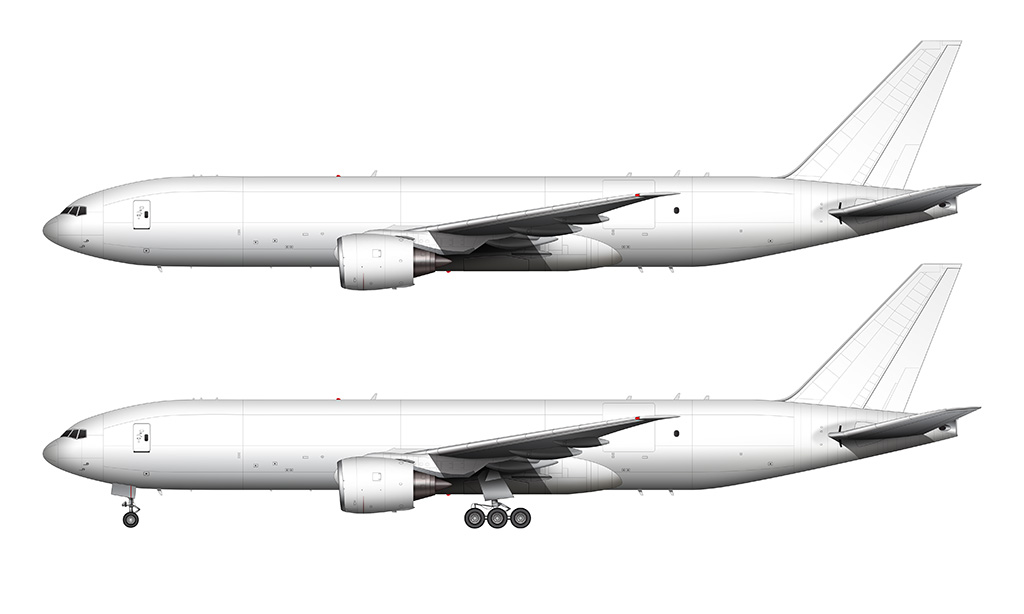
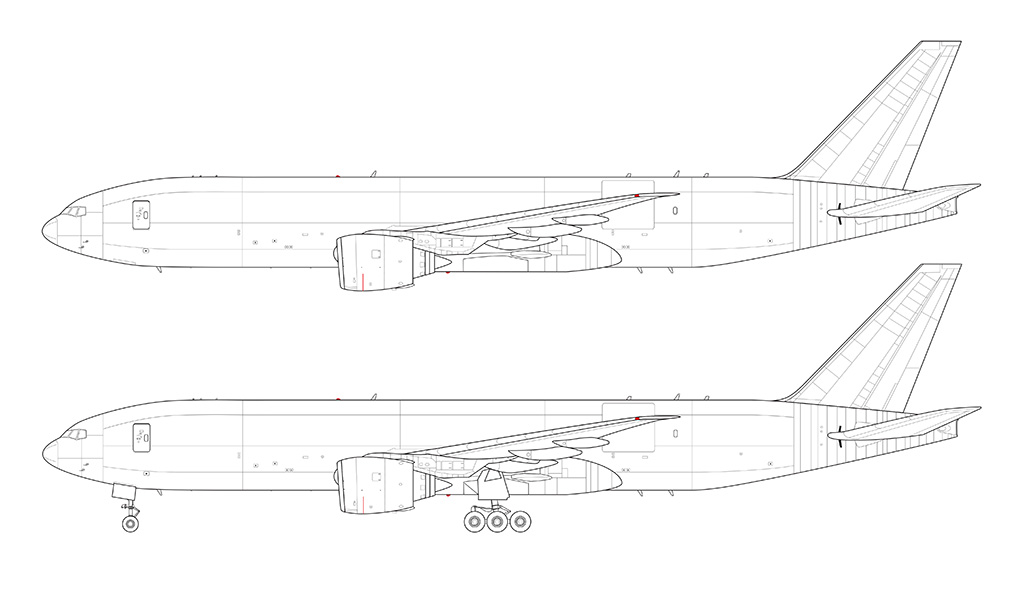

First up is the Boeing 777F, which is the all-cargo variant of the 777-200. Air France was the launch customer for this freighter, and they took delivery of their first airframe in February 2009. At the time of this writing, there are 128 777F’s flying for 30 different operators all over the world. That sounds like a success to me, and it’s only going to get better with so many cargo airlines looking to replace their older 747 and DC-10F/MD-11 freighters with much more efficient and capable aircraft such as the 777.
As most of you have probably figured out by now, I’m pretty darn far from being highly-knowledgeable when it comes to anything aerospace engineering related. I am an artist, plain and simple, and I’m much more comfortable pushing pixels that I am trying to learn and understand the reasoning for the placement of every rivet on every aircraft ever made. I just don’t have the patience for that kind of stuff!
That’s why I always learn a lot of interesting little things whenever I create a new aircraft template. What exactly did I learn by drawing this 777F? Quite simply, the cargo doors on this thing are really small and it doesn’t really make a whole lot of sense to me. For the record, the cargo door is really small on the A350F as well.
The only two other cargo aircraft that I’ve illustrated so far are the 767–300F, and the 747-8F. Those two particular aircraft have very large cargo door openings, so that’s why I was surprised to learn that the 777F has only one small door on the left side of the aircraft (towards the rear), and then two other small openings on the right side. How the heck do they manage to fit large stuff (like cars for example) into this aircraft?
Wouldn’t they want to make the doors large so as to make loading and offloading cargo as painless as possible? My only theory for the use of small doors is that large doors might compromise the structural rigidity of the airframe. Sounds plausible, right? Please, if there is anybody out there who knows the reason for this, I would love it if you could leave a comment below and tell me that I’m exactly right. lol

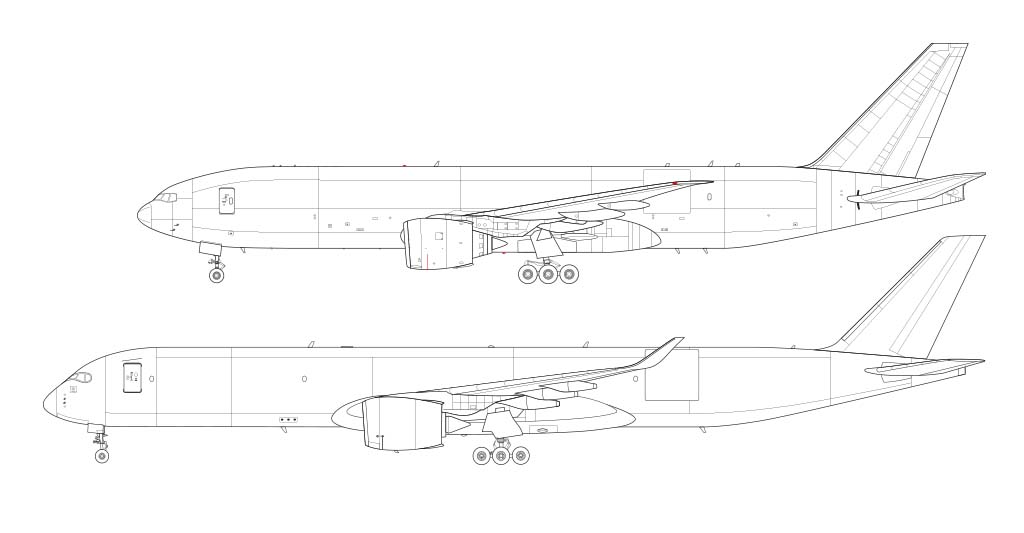
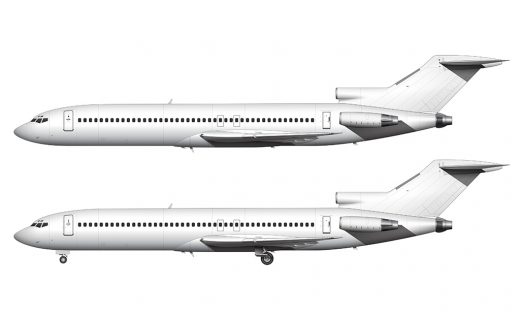
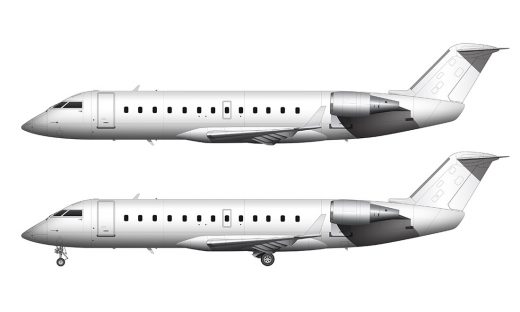
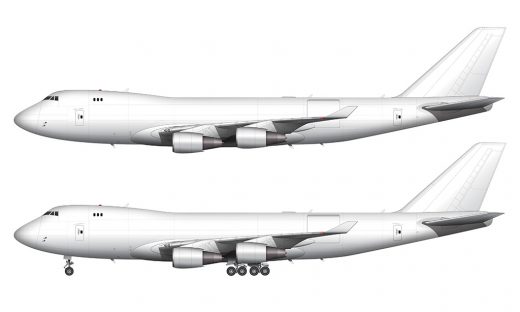
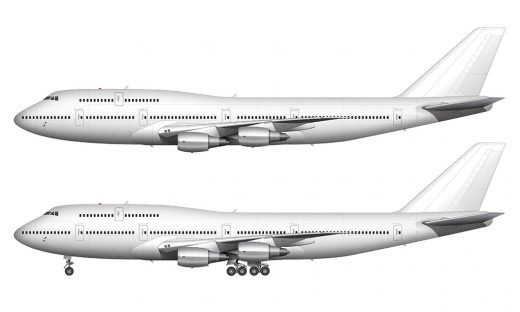
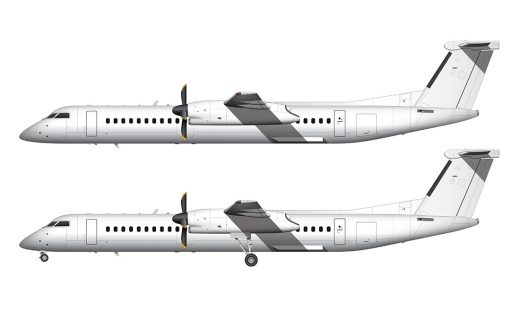
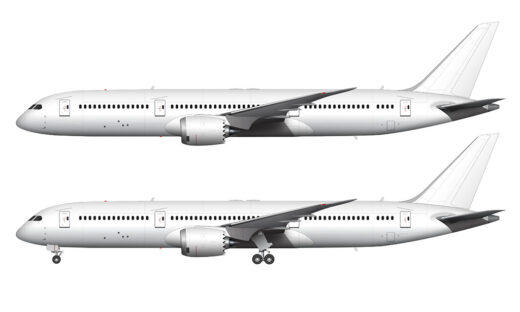
Just so you know the aircraft with the stretched upper deck have been converted from regular passangar variants and are called BCF
Thanks – yes, I was actually doing research on this recently and learned that the stretched upper deck versions are actually conversions by Boeing. I thought they came from the factory that way! Learn something new every day…
I think the reason the aircraft has a small cargo door, is because the aircraft is designed to be the longest range freighter, and it is! The aircraft is designed to do the routes none other can, and to be efficient.
Uk, you are referring to the 747-400BCF. I believe there is also a version, the 747-400CF, that has the nose door installed. There also is the 747-400LCF, Large Converted Freighter (Dreamlifter!)
The 747-400BCF actually has the windows on the aircraft, still, too!
Make avro RJ or Dornier please
When will the BAe146 come?????!!!!!
Haha, sorry about the delay! I’ve been so busy working on my travel blog lately that my illustration schedule has slipped a bit. I’m still planning on creating it!
Please make a small prop like dornier, dh8a-dh8b or Atr42
Imagining this freighter as a tri-jet with three Trent XWB-97’s (Airbus A350 engines) arranged the same way as the Lockheed L-1011 (two on the wings, one in the tail with an S-duct). Using the L-1011’s design, could you draw out a template for this hypothetical plane?
this will explain why it has such doors https://www.youtube.com/watch?v=ddE2dVCKeBo